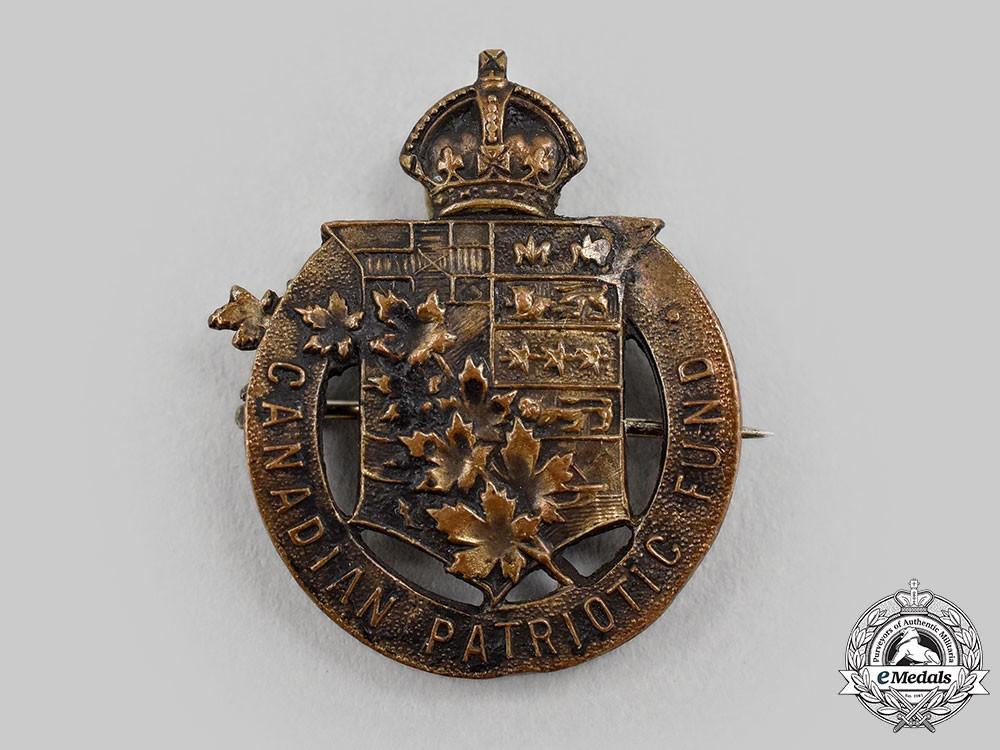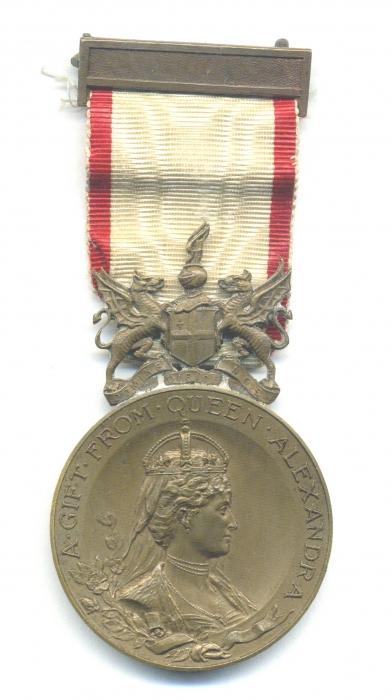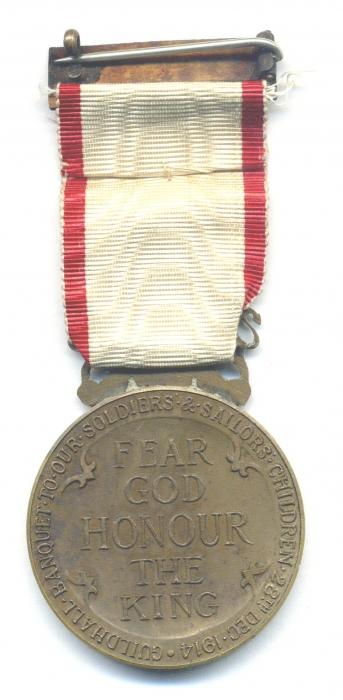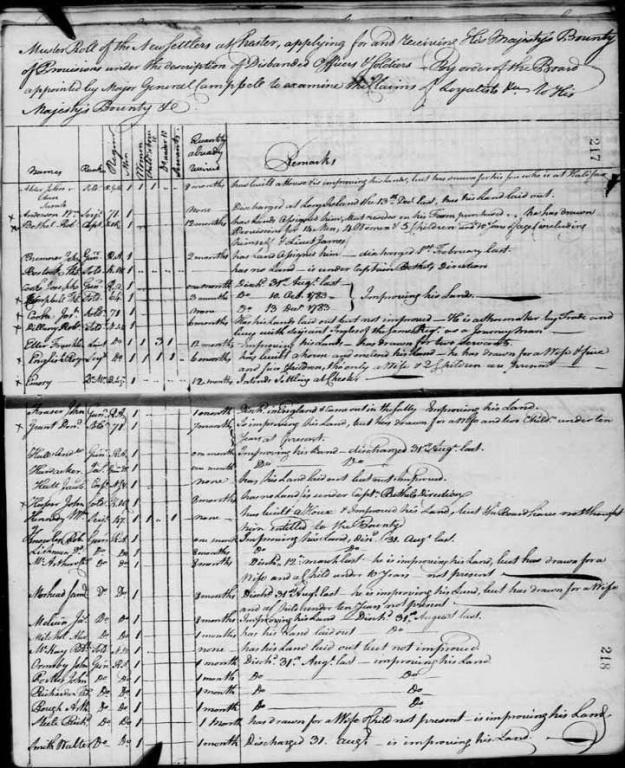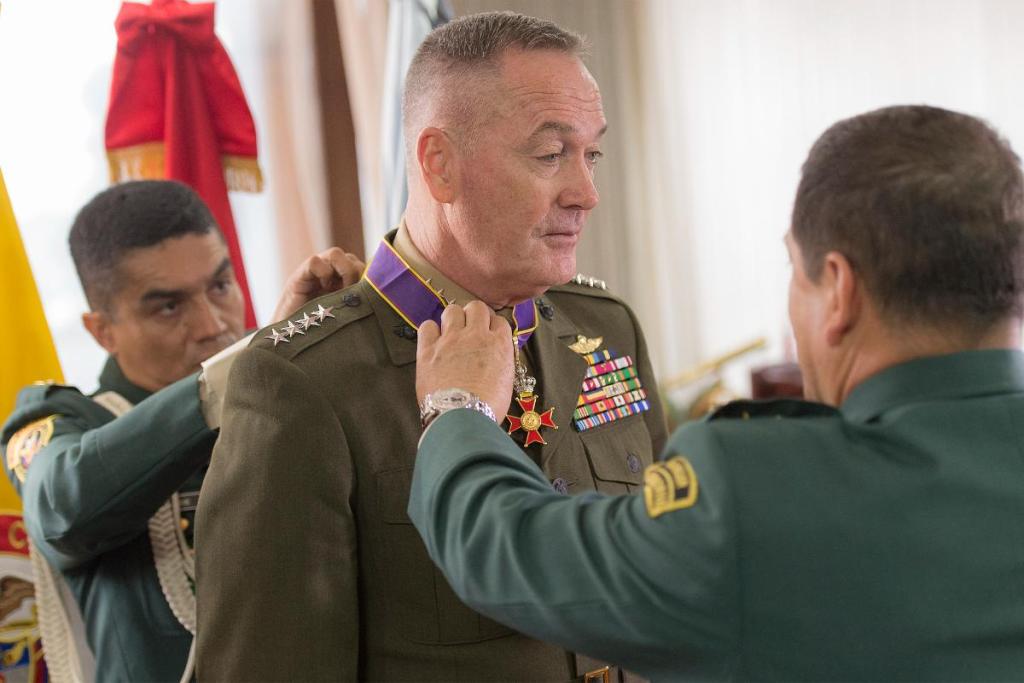-
Posts
4,807 -
Joined
-
Last visited
-
Days Won
12
Content Type
Profiles
Forums
Blogs
Gallery
Events
Store
Everything posted by Gordon Craig
-
ksg, Your welcome. Glad that I could help. Real airship artifacts are very hard to find. Great pictures of the crash. Regards, Gordon
-
ksg, Yes it is. Great artifact to have. https://www.iwm.org.uk/collections/item/object/30089210 http://aircraftinvestigation.info/airplanes/images/Zeppelin%20LZ76%20L%2033/image6.png Also, http://aircraftinvestigation.info/airplanes/Zeppelin LZ76 L 33.html Regards, Gordon
-

DDR East German Forestry Service Uniforms
Gordon Craig replied to Gordon Craig's topic in Germany: Post 1945: Bundesrepublik & DDR
Phil L. They would have performed the normal Forestry Officer tasks depending on their rank. Having uniforms doe not mean that they had different duties from a civilian forestry officer. They wore uniforms because they looked after forests on military land although they were not in the military. The same practice had been followed in the past particularly in the Third Reich era. They probably had the additional tasks in assisting in forested areas where live firing took place. The recovery of rounds that had not detonated etc. Regards, Gordon -
I come seeking some information about the pictured Canadian Patriotic Fund badge. This badge is in my collection along with some well know round Canadian Patriotic Fund badges. The crest beneath the maples leaves appears to be the same as the one on the cover of the book "THE CANADIAN PATRIOTIC FUND - A RECORD OF ITS ACTIVITIES FROM 1914 TO 1919" by Phillip H. Morris. Any assistance in that can be provided would be very much appreciated. The maker is Tansey of Montreal. Regards, Gordon
-

Ethiopia : Order of the Star of Ethiopia / Congo Medal + badges
Gordon Craig replied to No one's topic in Africa
No One, Thanks for posting these Ethiopian items. We don't see many posts from Ethiopia. Here is a link to another thread on the GMIC discussing Ethiopian badges. https://gmic.co.uk/topic/16518-ethiopian-militaria/ Regards, Gordon -
No One, Theses medals you posted should simply be considered miniatures. Some appear to have been ordered by individuals others just mass produced like any other commodity. I have both of these types in my possession. Some with the hope of attributing them to an individuals, other since they just ended up in my possession by accident. Collecting miniatures is not my main collecting area. There are collectors who collect nothing but miniature medals and they will probably have their own opinion as to how one should refer to them. I replied to your thread for a specific reason. The terms repro, fake, copies etc. seem to be used by many interchangeably and I don't think that they should be. Miniatures ordered by a person who was entitled to wear the same full sized orders are just that. Miniatures of his or her authorized entitlement. They should not be referred to as "fakes" or "repros" as they were not made to deceive. Regards, Gordon
-

queen alexandra 1914 banquet medal
Gordon Craig replied to a topic in Great Britain: Orders, Gallantry, Campaign Medals
There were approximately 1300 of these medals given out, by the Lord Mayor, at the banquet at the Guild Hall on the 28th of December 1914 to children selected by the Soldiers and Sailors Families Association. A number of pensioners from the Royal Military Hospital at Chelsea also received medals. The medals were not named and I am not aware of any role for these medals. Regards, Gordon -

India : "High Altitude Medal / Ucchh Tungta Medal / उच्च तुंगता मेडल"
Gordon Craig replied to No one's topic in South Asia
This is an interesting medal but Ed only partly explains who can qualify to be awarded it. This is from the Indian Army site. Regards, Gordon Greeting future officers, we all aim for the olive green but don’t know much about the various medals serving personnel wear on the uniform. Today we will discuss one such medal the ‘Uchh Tungta Medal’ also known as the ‘High Altitude Medal’. History The medal was instituted in 1986 to reward service at extremely high altitudes on India’s Himalayan border where blizzards may rage for weeks at a time and temperatures may fall below -50 centigrade. The medal’s official name is ‘Uchh Tungta Medal’. Conditions of Eligibility The conditions of eligibility for the award shall be as follows:- (a) Personnel who have been detailed for duties connected with the defence of the borders and who have completed an aggregate service of 180 days during the first spell of tenure on the active strength of a unit/formation in the areas where high altitude allowance is admissible commencing from 1st April 1984. (b) Aircrew personnel and personnel of ejection crew of Air maintenance units who carried out a minimum of 10 sorties or 40 hours of flying on transport support roles from 1st April 1984. (c) All personnel who died or sustained wounds leading to premature evacuation irrespective of time limit to stay. This will take effect from the date of issue. Eligible categories The categories of personnel eligible for the award shall be:- (a) Commissioned Officers, Juniors Commissioned Officers, Other Ranks, and Non-Combatants (enrolled) of the Regular Army embodied Auxiliary and Reserve Forces or any other lawfully constituted Armed Forces. (b) Nursing Officers and other members of Nursing Services in the Armed Forces. Design of the Medal and Ribbon Medal: The medal shall be circular in shape, made of cupro-nickel, 35 millimeters in diameter, and fitted to a plain horizontal bar. the face with the Ashokan Lions(State Emblem of India) above the national motto ‘सत्यमेव जयते’ (Satyameva Jayate = Truth Alone Prevails) in Hindi characters, circumscribed ‘Ucchh Tunga Medal’ in Hindi and ‘UCCHH TUNGA MEDAL’; the reverse with a representation of the Himalayan Mountains. Ribbon: The medal shall be worn suspended from the left breast by a silk ribbon which shall be 32 mm in width of Azura Blue color background with white diagonal reverse V Shape stripes of 2 millimeters in width with a distance of 5 millimeters between the two stripes. Note Cabinet Minister of Defence Shri Rajnath Singh officiating as chief guest of the 55th Raising Day(Oct 24) celebrations of ITBP announced High Altitude Medals will now also be awarded to personnel of ITBP, BSF, and SSB who serve at posts located above 9,000 feet. -
USN, Quite a task you have set for yourself. It should be a nice addition to your collection once it is restored to its former glory. In the photo you provided of this type of tunic he appears to be wearing the two Boer War medals. Reference to these rolls should tell you what campaign bars he is entitled to. Good luck with the tunic and I'd like to see it when it is completed. Regards, Gordon
-

Bronze BWM collection
Gordon Craig replied to Brian Wolfe's topic in Great Britain: Orders, Gallantry, Campaign Medals
Another small but interesting book "The Chinese Labour Corps" by Mark O'Neill. Publish in 2014. I'll post a picture of the cover tomorrow. Gordon Thanks for the kind words. I applaud your fortitude. Bronze medals can become addictive beyond Labour Corps. I just bought one to Worker Elsie Lilian Street, Queen Mary's Army Auxiliary Corps. She was an assistant cook Regards, Gordon -

Bronze BWM collection
Gordon Craig replied to Brian Wolfe's topic in Great Britain: Orders, Gallantry, Campaign Medals
Owain, Interesting article. As is shown here, Missionary's in China were recruited to sere as officers in the Chinese Labour Corps. Primarily because they could speak a dialect of Chinese that was understood by the majority of those who joined the CLC, They also escorted members of the CLC on the boats from China to North America. The majority came to Canada and were transported across the country in special trains. All of this was done in great secrecy. Canada has put in place regulations to try and keep Chinese immigrants from coming to Canada. A "Head Tax" that was too high for most immigrants to pay was very effective. China was a neutral country when these members of the CLC being sent to France so secrecy was necessary. These movements continued to be kept secret after China declared war on the Central Powers because the Canadian Government wished it kept so. One thing not mention so far re these bronze BWM presented to members of the CLC is that they should not start with a zero. These are always fakes. There have been a number of BWMs to the CLC on ebay lately that I am concerned about. They come with a copy of a page of the CLC role showing the name etc matching the Bronze BWM being sold. The medal on sold on ebay today shows spaces in the word CHINESE. See attached photos. I can not say it was a fake but just that it was of a concern to me so I did not bid on it. Other than that, it looked really good. Regards, Gordon -
louisg, Good question. This is outside my main interest but intrigued me. Where was the land grant located? The only thing that I could find in Library and Archive Canada was a list of Loyalists granted land in Chester Nova Scotia when their units were disbanded. These land grants had to be applied for. Land grants in Chester were granted to coloured men who had served in Loyalist units. Others could have been granted land there as well. Since your relative is thought to have died and perhaps he would have had to apply for a land grant and couldn't your question is a very valid one. I'll keep poking around the LAC and see if I can find anything else. The LAC has been closed for access by researchers in person for some time and they are having problems with their search software so I can not hold out too much hope of additional data. I'm the one who assigned the name to the attachment. The hand writing is not very legible but there appears to be a number of different units with men assigned land grants in Chester. Regards, Gordon
-
Antonio, Thanks for posting the article on this award. I'll post the text in English here. Regards, Gordon ORDER OF CIVIL MERIT | CIVIL ORDER OF MERIT to see a summary of the regulation, click on the image to see a summary of the regulation please click on the medal Its purpose is to reward the merits of a civil nature, acquired by the personnel dependent on any of the public Administrations included in the scope of Law 30/1992, or by persons outside the Administration, who provide or have provided relevant services to the State, with extraordinary work, profitable initiatives, or with exemplary constancy in the fulfillment of their duties Collar (Decree of February 3, 1945) Royal Decree 2395/1998, of November 6 Period of use: 1945- The insignia will be formed by a central piece that represents the National Shield, in golden metal and enamel, with simple quartering, hanging from it the Cross of the Order, which will be described later, at a size of 56 x 58 millimeters and completed with double laurel bouquet in green enamel. On both sides of the aforementioned shield, there are nine pieces or links that make up the Collar itself. Five of them, oval in shape, will be formed by the central allegory of the Cross of the Order, bordered with golden laurel, and will be placed to the left and right of the central shield and alternating with the four remaining pieces that will be formed by an aspa of blue enamel finely bordered with white, and on it, two intertwined laurel branches, which symbolize the civic virtues that are rewarded. The people who are in possession of the Necklace may use, in acts whose ceremonies do not require its use, a Grand Cross of the same characteristics as the one that will be described later for the degree of Grand Cross, with the difference that its plaque will have a double branch. of laurel in green enamel, and the band will be made up of a silk moiré ribbon, 101 millimeters wide, of an intense blue color, with two white stripes, 10 millimeters wide, located on the edges For practical and optional reasons , ladies may wear the Grand Cross of the Collar with the dimensions indicated: plaque, 69 x 71 millimeters, band, 45 millimeters wide, and scallop, 38 x 42 millimeters Gran Cruz (Royal Decree of June 25, 1926) Regulation by Royal Decree 2396/1998, of November 6 Period of use: 1926-1931; 1942- It will consist of a 101 mm wide silk band, which will be placed, in a third, from the right shoulder to the left side, of an intense blue color, divided along its length by a narrow white stripe; from the rose window, which will join the ends of it, will hang the Cross of the Order; This will be made of golden metal, 48 x 50 mm, made up of four equal arms, in the shape of a cross, enameled in intense blue, and finally bordered in white; between these arms it will carry five polished bursts of the same metal. In its center, an oval of intense blue enamel, bordered with white fillet, with the inscription Al Mérito Civil in gold, and in the center stamped in high relief, the characteristic motif of the Order, which will be a midwife leaning on a column. , with a sword in his right hand, tempered in the sacrificial fire, as a symbol of civic virtues. The royal crown will appear between the upper ends of the blades. The entire previous set hangs from a green enameled laurel wreath. On the left side they will hold a golden plate, of the same design as the Cross previously described, measuring 74 x 77 mm, also carrying three polished bursts of the same metal, placed behind each arm of the blades and protruding from them. For practical and optional reasons, ladies may wear the insignia of this degree, with the dimensions indicated: plaque, 61 x 63 mm, band, 45 mm wide, and scallop, 38 x 42 mm. Commendation number (Royal Decree of June 25, 1926) Regulation by Royal Decree 2396/1998, of November 6 Period of use: 1926-1931; 1942- It will consist of a plate with the same characteristics as those described for the plate of the Great Cross, with the difference in its size, which will be 75 millimeters in diameter and the central circle that will be formed by a colored shield with two crowned columns. , real, the one located on the right side and imperial, the one on the left, and as a background, illuminating the whole, a sun in its rising, by the ocean. Surrounding the columns, and on a white tape, it reads in gold letters: PLUS ULTRA. This insignia will be placed on the left side For practical and optional reasons, ladies may wear this insignia with the size reduced to 60 millimeters. Encomienda (Royal Decree of June 25, 1926) Regulation by Royal Decree 2396/1998, of November 6 Period of use: 1926-1931; 1942- It will consist of a golden cross, measuring 48 x 50 mm, identical to the veneer of the Grand Cross, which will be worn hanging from the neck by means of a 45 mm wide ribbon, with the colors of the Order, blue and white, as as described in the degree of Grand Cross Optionally and for practical reasons, ladies may wear this insignia holding it on a double loop, with drops, with the colors of the Order and wear it, as a brooch, on the left side of the chest Officer's Cross (Royal Decree of June 25, 1926) Regulations by Royal Decree 2396/1998, of November 6 Period of use: 1926-1931; 1942- A golden Cross, identical to the veneer of the Grand Cross, hanging from a 30 mm wide ribbon, with the colors of the Order and attached to the left side of the chest, with a golden metal pin-buckle For reasons Practically and optionally, ladies may wear this insignia with the size reduced to 38 x 42 mm, support it by means of a double bow, with drops, in the colors of the Order and wear it, as a brooch, on the left side of the chest. Cruz (Royal Decree of June 25, 1926) Regulation by Royal Decree 2396/1998, of November 6 Period of use: 1926-1931; 1942- It will consist of a silver Cross with the remaining characteristics equal to that of the Great Cross scallop and will be displayed in the same way as the Officer's Cross For practical and optional reasons, ladies may use this insignia with the size reduced to 38 x 42 mm, support it by means of a double bow, with drops, with the colors of the Order and wear it, as a brooch, on the left side of the chest Silver Cross (Royal Decree of June 25, 1926) Regulation by Royal Decree 2396/1998, of November 6 Period of use: 1926-1931; 1942- A Cross with four arms, in the shape of an X, measuring 33 x 40 mm, between whose upper ends will appear the Royal Crown, in silver metal and without any enamel. In the center, superimposed, it will have an oval stamped with the inscription Al Mérito Civil and the characteristic motif of the Order. It will be worn in the same way as the Officer's Cross For practical and optional reasons, ladies may wear this insignia holding it on a double loop, with drops, with the colors of the Order and wear it, as a brooch, on the left side chest
-
Ladies and Gentlemen, I am looking for any information that you may have on the Fe en la Causa (Faith in the Cause) awards. Date instituted, how many levels, pictures of the different levels, identified, etc. I've asked Megan but want to ask in this sub forum for possibly wider dissemination. I've posted pictures of some of the different grades I have pictures of. Ribbon may vary for different services. Regards, Gordon
-

Hungary Hungarian Kivalo Dolgozol Badges
Gordon Craig replied to hunyadi's topic in Central & Eastern European States
Philip. S, Sorry but your link does not bring up an image of the badge/medal you are interested in. Just the little square shows next to the link on your post. -

Argentine Order of May
Gordon Craig replied to GODISHIGH's topic in Rest of the World: Militaria & History
GODISHIGH, Looks good to me. I recently moved and all of my collection is in storage so I can not post my "ORDEN DE MAYO AL MÉRITO". Looks like an older issue to me and not like most of the more recent ones you see for sale that were made in the U.S.A. Regards, Gordon -
Gentlemen, Many interesting thoughts here. Some of my fellow collectors where I live are selling their collections but not because of the current economic climate. They are selling them because they have reached an age where they feel they need to sell rather than leave them to their family to dispose of. I have a large uniform collection that I am selling for the same reason. Personally, I buy fewer medals lately because of the high prices they sell for at auction prices. If I bid on an lot in an auction it usually goes for 4 to 5 times more than I am willing to pay for it. Add on the ever increasing fees of auction houses, as much as 30% in some, plus the fees added by The Saleroom etc (often 5 %) adding medals to my collection has become prohibitive. Unlike some of the comments above, I don't buy medals because they are less expensive. I don't pass up meals that are a good deal either. I buy medals that I can afford and fit into my collection. As to fellow collectors selling medals in my area, we are visited by a rep from Spinks once a year and he leaves with a suitcase well loaded with medals that go for higher prices in England than can be had locally. I don't believe that the reasons for selling medals has changed recently or will in the near future. It will always be "by low and sell high". Regards, Gordon
-
xxx, Thanks for posting this interesting information. I was not aware that DDR and BRD could be worn together. Using the time in service in the DDR towards service in the BRD for a long service award would only be logical. I tried to translate pages 50 to 54 in Google Translate but was not successful. Even for a person who does not speak German the basic information about DDR awards in use in the BRD is understandable. Are there other states that also do this? Regards, Gordon


